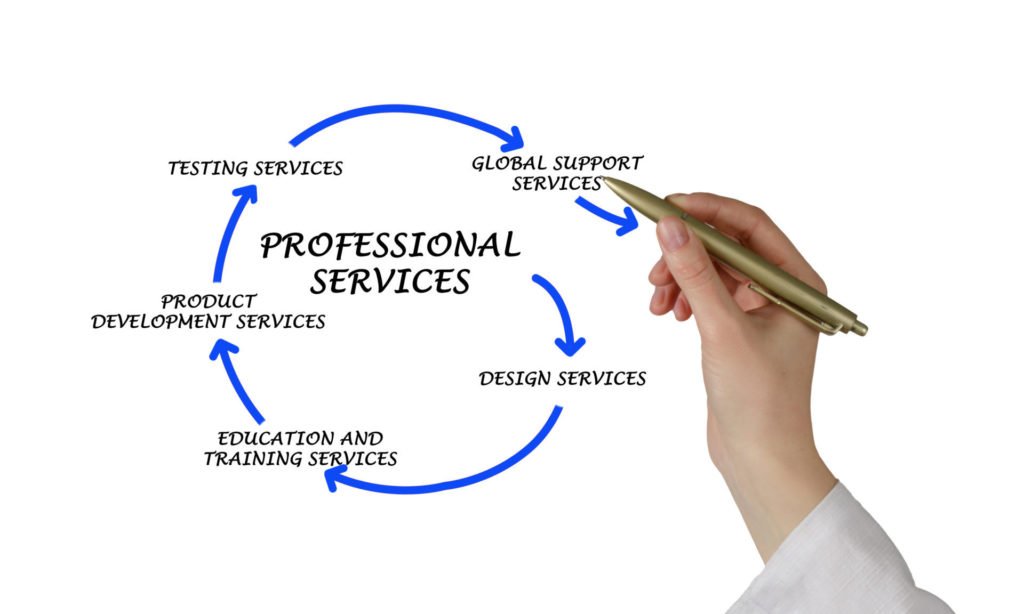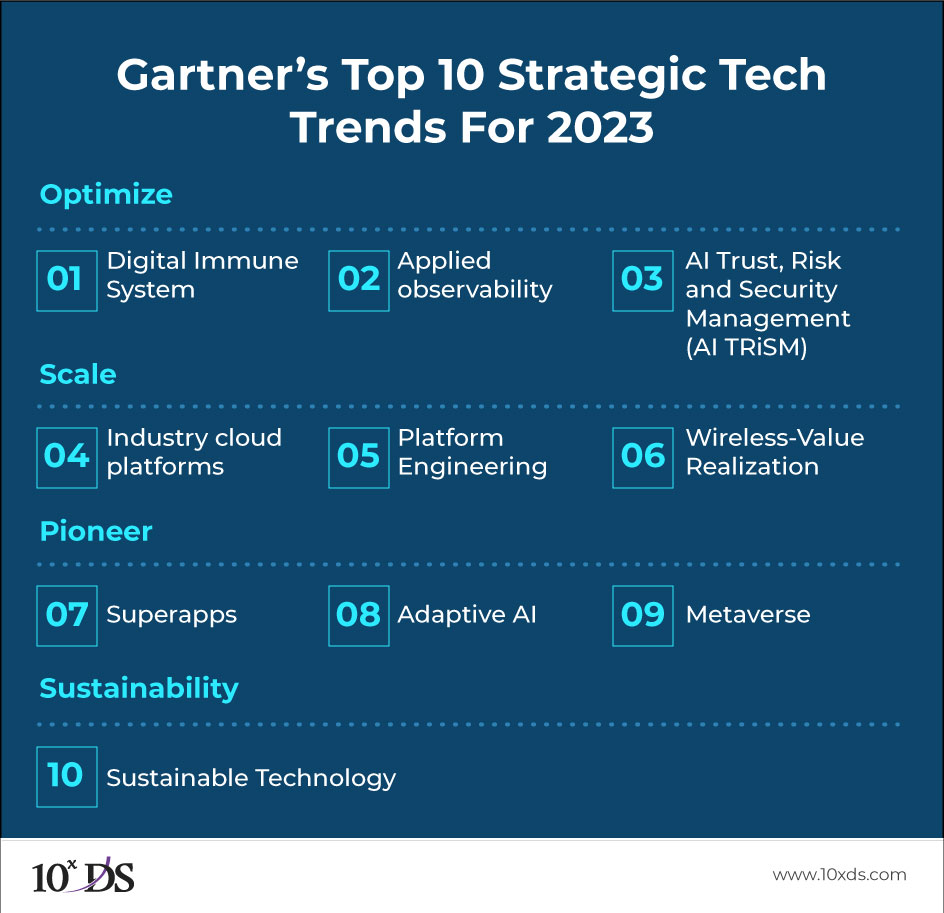What is Ops Technology: Optimizing Modern Operations
What is Ops technology? It’s the driving force behind streamlined, efficient operations in today’s fast-paced world. Imagine a symphony of interconnected tools and strategies working in harmony to automate processes, […]
What is Ops technology? It’s the driving force behind streamlined, efficient operations in today’s fast-paced world. Imagine a symphony of interconnected tools and strategies working in harmony to automate processes, analyze data, and deliver exceptional results. From manufacturing plants to online retailers, Ops technology empowers businesses to achieve unprecedented levels of productivity and customer satisfaction.
This technology encompasses a wide range of components, each playing a crucial role in optimizing various aspects of business operations. From cloud computing and data analytics to automation and cybersecurity, these tools are designed to enhance efficiency, reduce costs, and ultimately, drive business growth.
Defining Ops Technology
Ops technology, often referred to as “DevOps” or “DevSecOps,” encompasses a wide range of tools, practices, and methodologies aimed at streamlining and automating the software development lifecycle. It bridges the gap between development and operations teams, enabling faster delivery of high-quality software while maintaining operational stability and security.
Core Concepts of Ops Technology
Ops technology is built upon a set of core principles that emphasize collaboration, automation, and continuous improvement. These principles include:
- Continuous Integration and Continuous Delivery (CI/CD): This practice involves automating the build, test, and deployment processes, allowing for frequent and reliable software releases.
- Infrastructure as Code (IaC): This approach treats infrastructure components as code, enabling automation and version control of infrastructure configurations.
- Monitoring and Observability: Real-time monitoring and observability tools provide insights into application performance, user behavior, and system health, enabling proactive issue detection and resolution.
- Collaboration and Communication: Effective communication and collaboration between development and operations teams are essential for successful Ops technology implementation.
Examples of Ops Technology in Different Industries
Ops technology is widely adopted across various industries, transforming how software is developed and delivered. Here are some examples:
- E-commerce: Online retailers leverage Ops technology to ensure seamless website performance, rapid product updates, and efficient order processing.
- Financial Services: Financial institutions utilize Ops technology to automate trading processes, enhance security measures, and improve customer service.
- Healthcare: Hospitals and healthcare providers utilize Ops technology to manage patient data securely, streamline medical records, and improve clinical workflows.
- Manufacturing: Manufacturing companies use Ops technology to optimize production processes, monitor equipment performance, and improve supply chain efficiency.
Evolution of Ops Technology
Ops technology has evolved significantly over the years, driven by advancements in cloud computing, automation tools, and software development methodologies. This evolution has led to several key trends:
- Shift to the Cloud: Cloud computing has enabled organizations to scale their infrastructure on demand and adopt agile development practices.
- Rise of Microservices: Microservices architecture breaks down applications into smaller, independent services, allowing for faster development and deployment.
- Emphasis on Security: The increasing importance of security has led to the emergence of DevSecOps, which integrates security practices throughout the software development lifecycle.
- Artificial Intelligence (AI) and Machine Learning (ML): AI and ML are being used to automate tasks, optimize workflows, and enhance decision-making in Ops technology.
Key Components of Ops Technology
A robust Ops technology stack is comprised of various components that work in unison to streamline and optimize operational processes. These components offer a comprehensive solution for managing, analyzing, and improving operational efficiency.
Essential Components of an Ops Technology Stack
A robust Ops technology stack typically includes a range of components that work together to achieve operational excellence. Each component plays a crucial role in managing, analyzing, and improving operational efficiency.
| Component | Function | Example | Benefits |
|---|---|---|---|
| Monitoring and Observability Tools | Real-time monitoring of system performance, identifying potential issues, and providing insights into system behavior. | Prometheus, Grafana, Datadog | Proactive issue detection, improved performance, reduced downtime, and enhanced system visibility. |
| Automation Tools | Automating repetitive tasks, reducing manual errors, and improving efficiency. | Ansible, Puppet, Chef | Increased speed and accuracy, reduced human error, and improved scalability. |
| Configuration Management Tools | Managing infrastructure configurations, ensuring consistency across environments, and simplifying deployments. | Terraform, CloudFormation, Ansible | Reduced errors, improved consistency, and faster deployments. |
| Containerization Platforms | Packaging applications and dependencies into isolated units, enabling portability and scalability. | Docker, Kubernetes, Mesos | Improved resource utilization, faster deployments, and enhanced application portability. |
| Logging and Analytics Platforms | Collecting and analyzing logs from various sources, providing insights into system behavior and identifying anomalies. | Splunk, ELK Stack, Graylog | Improved troubleshooting, performance optimization, and security incident detection. |
| Continuous Integration and Continuous Delivery (CI/CD) Pipelines | Automating the software development and deployment process, enabling faster and more frequent releases. | Jenkins, GitLab CI/CD, CircleCI | Reduced release cycles, improved code quality, and enhanced collaboration. |
| Incident Management Systems | Managing incidents, coordinating responses, and tracking resolution progress. | PagerDuty, VictorOps, OpsGenie | Improved incident response times, reduced downtime, and enhanced communication. |
| Collaboration and Communication Tools | Facilitating communication and collaboration among team members, improving knowledge sharing and problem-solving. | Slack, Microsoft Teams, Zoom | Enhanced team communication, improved coordination, and faster issue resolution. |
Benefits of Implementing Ops Technology

Implementing Ops technology offers numerous benefits that can significantly enhance an organization’s performance and competitiveness. By streamlining processes, automating tasks, and leveraging data-driven insights, Ops technology empowers businesses to operate more efficiently, reduce costs, and deliver exceptional customer experiences.
Improved Efficiency and Productivity
Ops technology streamlines processes, automates repetitive tasks, and optimizes resource allocation, leading to increased efficiency and productivity. For instance, automating order fulfillment processes through warehouse management systems can significantly reduce processing time and errors, freeing up employees to focus on more strategic tasks.
Reduced Costs and Increased Profitability
By automating processes, minimizing errors, and optimizing resource utilization, Ops technology helps businesses reduce operational costs. For example, implementing a supply chain management system can optimize inventory levels, minimize waste, and reduce transportation costs.
Enhanced Customer Satisfaction
Ops technology empowers businesses to provide faster, more accurate, and personalized customer service. By leveraging data analytics, companies can anticipate customer needs, personalize interactions, and resolve issues more effectively. For example, a customer relationship management (CRM) system can track customer interactions, preferences, and purchase history, enabling businesses to provide tailored recommendations and support.
Table of Key Benefits for Different Business Functions
| Business Function | Benefit | Example | Metrics |
|---|---|---|---|
| Sales and Marketing | Increased lead generation and conversion rates | Implementing a marketing automation platform to personalize email campaigns and nurture leads | Lead conversion rate, cost per acquisition (CPA) |
| Operations | Reduced production costs and lead times | Using a manufacturing execution system (MES) to optimize production processes and minimize downtime | Production cost per unit, lead time |
| Customer Service | Improved response times and customer satisfaction | Implementing a live chat solution to provide instant support and answer customer queries | Average response time, customer satisfaction score (CSAT) |
| Finance | Enhanced financial reporting and forecasting accuracy | Using a financial management system to automate accounting processes and generate real-time financial reports | Financial reporting accuracy, forecasting accuracy |
Challenges of Implementing Ops Technology
Implementing Ops technology can be a complex and challenging process. Several factors can hinder a successful implementation, from data integration issues to employee resistance.
Data Integration Challenges, What is ops technology
Data integration is a critical aspect of Ops technology implementation. Different systems and data sources need to be seamlessly integrated to provide a unified view of operations. However, this can be challenging due to:
- Data silos: Different departments often maintain their own data systems, leading to data duplication and inconsistencies.
- Data quality issues: Data quality can vary across different sources, leading to inaccurate insights and decisions.
- Data formats and standards: Different systems may use different data formats and standards, making integration difficult.
To overcome these challenges, organizations should:
- Establish a data governance framework: This framework should define data standards, ownership, and access controls.
- Invest in data integration tools: These tools can help automate data extraction, transformation, and loading (ETL) processes.
- Prioritize data quality: Organizations should invest in data cleansing and validation processes to ensure data accuracy.
Security Concerns
Ops technology often involves collecting and analyzing sensitive data, raising security concerns.
- Data breaches: Organizations need to protect sensitive data from unauthorized access.
- Compliance requirements: Organizations must comply with relevant data privacy regulations, such as GDPR and CCPA.
To address these concerns, organizations should:
- Implement robust security measures: This includes access controls, encryption, and intrusion detection systems.
- Conduct regular security audits: These audits can identify vulnerabilities and ensure compliance with security standards.
- Educate employees about security best practices: This can help reduce the risk of human error.
Employee Resistance
Implementing Ops technology can be disruptive, leading to employee resistance.
- Fear of job displacement: Some employees may fear that automation will replace their jobs.
- Resistance to change: Employees may be resistant to learning new systems and processes.
- Lack of understanding: Employees may not fully understand the benefits of Ops technology.
To overcome employee resistance, organizations should:
- Communicate the benefits of Ops technology: Highlight how it can improve efficiency, productivity, and decision-making.
- Provide training and support: Ensure employees are adequately trained on new systems and processes.
- Involve employees in the implementation process: This can help build buy-in and reduce resistance.
Future Trends in Ops Technology

The landscape of operations technology is constantly evolving, driven by advancements in artificial intelligence (AI), machine learning (ML), and automation. These technologies are transforming how businesses operate, enabling greater efficiency, agility, and insights.
Impact of AI, ML, and Automation on Operations
AI, ML, and automation are poised to significantly impact the future of operations. These technologies offer a wide range of capabilities that can revolutionize how businesses manage their processes and resources.
- Predictive Maintenance: AI and ML algorithms can analyze sensor data from machines and equipment to predict potential failures, allowing for proactive maintenance and reducing downtime. This can significantly improve operational efficiency and minimize costs associated with unexpected repairs. For example, a manufacturing plant using AI-powered predictive maintenance can identify potential equipment failures before they occur, allowing for scheduled maintenance during off-peak hours, minimizing production disruptions and maximizing uptime.
- Process Optimization: AI and ML can analyze large datasets of operational data to identify bottlenecks and inefficiencies in processes. This information can be used to optimize workflows, improve resource allocation, and enhance overall productivity. For example, a logistics company can use AI to optimize delivery routes, minimizing travel time and fuel consumption, leading to cost savings and improved efficiency.
- Automated Decision Making: AI-powered systems can automate decision-making processes, freeing up human operators to focus on more strategic tasks. This can improve decision-making speed and accuracy, leading to faster response times and improved outcomes. For example, a financial institution can use AI to automate loan approval processes, speeding up the approval process and improving customer satisfaction.
- Enhanced Customer Experiences: AI and automation can be used to personalize customer interactions, provide faster and more efficient support, and create more engaging experiences. For example, a retail company can use AI-powered chatbots to provide instant customer support, answer frequently asked questions, and resolve issues quickly, improving customer satisfaction and loyalty.
Vision for the Future of Ops Technology
The future of Ops technology is exciting and promising. With the continued advancement of AI, ML, and automation, businesses can expect to see even greater levels of efficiency, agility, and insights. This will enable organizations to adapt to changing market conditions, optimize their operations, and gain a competitive edge.
- Hyper-Automation: The future of Ops technology will see the widespread adoption of hyper-automation, where AI and ML are used to automate end-to-end processes, from data capture to decision making. This will enable businesses to achieve unprecedented levels of efficiency and productivity, freeing up human workers to focus on higher-value tasks.
- Data-Driven Decision Making: AI and ML will play a crucial role in enabling data-driven decision making. By analyzing large datasets of operational data, businesses can gain valuable insights into their operations, identify trends, and make informed decisions to improve efficiency and profitability. This will be essential for organizations to stay ahead of the competition and thrive in a rapidly evolving business landscape.
- The Rise of the Smart Factory: The convergence of AI, ML, and automation is driving the emergence of the smart factory, where production processes are highly automated and interconnected. These factories will be able to adapt to changing demands, optimize production schedules, and minimize downtime, leading to significant improvements in efficiency and productivity. This will also lead to the creation of new jobs and opportunities in the field of robotics, automation, and AI.
Concluding Remarks: What Is Ops Technology

In conclusion, Ops technology is not just a collection of tools; it’s a strategic approach to transforming business operations. By embracing the power of automation, data-driven insights, and continuous improvement, companies can unlock their full potential and thrive in a competitive landscape. As technology continues to evolve, Ops technology will undoubtedly play an increasingly pivotal role in shaping the future of business.
Ops technology encompasses a wide range of tools and systems designed to optimize business processes, from inventory management to customer service. One fascinating example of ops technology in action is linen tracking technology , which helps hotels and healthcare facilities efficiently track and manage their laundry supplies.
This technology not only streamlines operations but also contributes to cost savings and improved hygiene standards, demonstrating how ops technology can enhance efficiency and customer experience across diverse industries.










